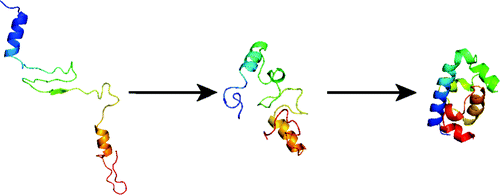
G. Bowman, V. Voelz, and V. S. Pande.
Journal of the American Chemical Society 133 664-667 (2011)
ABSTRACT.
Protein folding is a classic grand challenge that is relevant to numerous human diseases, such as protein misfolding diseases like Alzheimer’s disease. Solving the folding problem will ultimately require a combination of theory, simulation, and experiment, with theory and simulation providing an atomically detailed picture of both the thermodynamics and kinetics of folding and experimental tests grounding these models in reality. However, theory and simulation generally fall orders of magnitude short of biologically relevant time scales. Here we report significant progress toward closing this gap: an atomistic model of the folding of an 80-residue fragment of the λ repressor protein with explicit solvent that captures dynamics on a 10 milliseconds time scale. In addition, we provide a number of predictions that warrant further experimental investigation. For example, our model’s native state is a kinetic hub, and biexponential kinetics arises from the presence of many free-energy basins separated by barriers of different heights rather than a single low barrier along one reaction coordinate (the previously proposed incipient downhill folding scenario).
